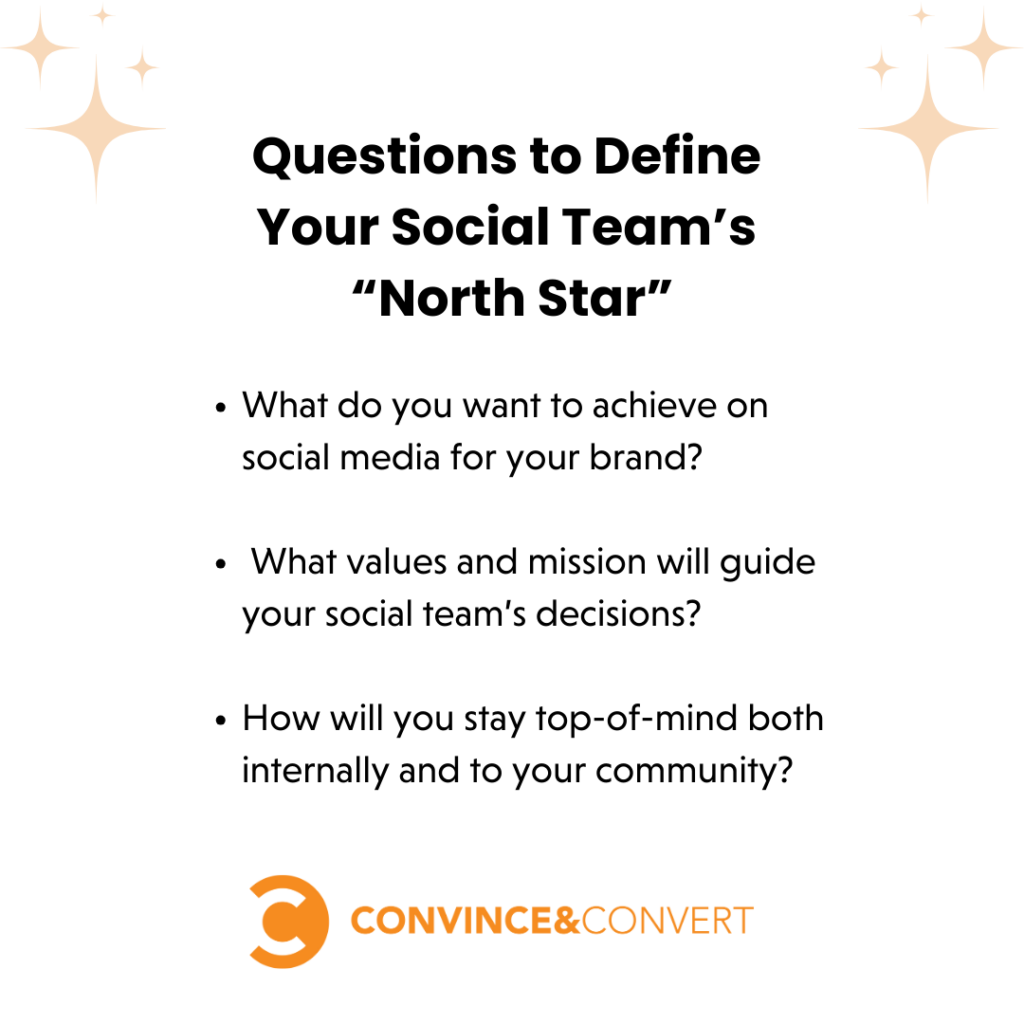The struggle is real for social media leaders, managers, and teams. Whenever you mention that you work in social media, from the outside looking in, people think that you take a photo and/or video and just hit “post” to make the magic happen.
Nevertheless, we know it takes much more work to manage a brand on social media. This includes the importance of social media for discovery, reputation management, community building, and brand awareness and engagement. Yet, social media as an industry still lacks the resources, budget, and frankly, the respect, it deserves.
55% of consumers discover brands for the first time on social media, according to Sprout Social. It’s no surprise that consumers go to social media first to search and discover new brands to follow.
Brand is social and social is brand.
According to SociallyBuzz, 78% of consumers are more likely and willing to make a purchase from a brand after a positive engagement with the brand on social media. So if we know how important social media is to connect with consumers and bring them along the social media marketing funnel, why do we find it difficult to prove ROI to leadership within an organization?
In this post, we’ll help get rid of the overwhelm in this topic and we’ll breakdown the steps you’ll need to take to start making a case for social media marketing, start empowering your social media teams to start owning what they do best, and to ultimately prove the ROI of your social media efforts.
Remember, the steps outlined below should be taken once you have completed an overall audit of your brand’s social channels. Once you have a solid foundation of data to analyze and rank the current level of maturity your brand has on social, you can understand how it ranks against its competitors and the industry so we have a set benchmark to build from and create KPI’s and goals.
1. Discover your “why” as a social team

Every successful team is driven by a common vision, purpose, or mission. What’s yours?
First, you want to understand what your north star is as a brand, what does your brand stand for. Once you have that, drill it down to what is your social team’s “why” or north star. What do you want to achieve overall on social media for the brand and what values and mission will help the social team stand out and stay top of mind both internally and to your community?
Define the role and responsibilities of the social team. As the brand’s social team, you hold the keys to the most direct connection the brand has with its audience. What boundaries do you want to set internally? What are the rules and process of working with the social team? Who is on the social team and what is their role? What is the social team responsible for and not responsible for? Last, how do you want other teams to work with the social team? (i.e. bringing in the social team at the beginning of campaign planning instead of at the end.)
2. Create social KPI’s that tie back to business and marketing organization objectives
How will the social team’s role help achieve these objectives? Next, you want to understand the overall company’s business objectives and how that determines the marketing organization’s business objectives. In turn, you will want to create the social team’s KPI’s to ladder back up to all of those objectives and communicate how social “moves the needle” for the business.
Important areas to focus on:
- Relationships and Visibility – Identify who directly impacts the social team via business decisions and build relationships with these key stakeholders. Create opportunities for social team visibility. Gain support from leaders and cross-functional teams to become advocates for the social team
- Create Custom Social Team KPI’s – Create a master dashboard to house all social data. Utilize social analytics reporting tools to gather data. Identify which metrics ladder back up to business/marketing metrics and research industry benchmarks
- Testing & Optimization – Understand the goals you want to create and choose a desired experimentation to test and learn. Gather results from said experiment to have proof of concept. Assess and optimize KPI’s to include learnings and insights
- Data Storytelling – Create a system and standard for pulling and measuring data for consistency purposes. Measure social data among other marketing metrics to show impact. Use tools to make your data visual to tell a story of what is good and bad
- Market your Marketing – Want to create impact? Find existing or create new opportunities to present social data to the larger company and/or marketing organization. Keep the social team top of mind always. Build a process to market your wins internally on a consistent basis and include cross-functional teams. Create a role for a dedicated team member to own data on the team
3. Data Storytelling is Key
How do you use data to educate, tell a story, and make an impact? The last step to consider is to be data-driven in your strategy and overall social approach within internal communication. You want to implement storytelling when you’re showcasing data and insights to internal stakeholders to be able to be effective and make an impact in “selling in social” and getting leadership buy-in.
94% of leaders agree that social media data and insights have a positive impact on building brand reputation and brand loyalty, according to Sprout Social’s The 2023 State of Social Media Report.
You want to visually tell a story the C-Suite, your target audience, can understand. Research has found that marketing practitioners and leadership perceive the value of social through different metrics. You want to show data to this audience that does not have much time that your data is concise, straightforward, big picture thinking, shows competitive advantage, visually appealing and engaging, and business objective-focused to help sell buy-in for social media resources and support.
Marketers know that we have access to A LOT of data, however, we need to identify which are the key metrics to highlight to measure success and pacing towards our end-of-year KPI’s. For example, Engagement Rate is a top metric we want to look at and measure against. Essentially, you can calculate it by taking the total amount of public-facing engagements / reach OR views * 100 = ER%.
4. Stand in your Power as Social Experts
The constant challenge of having to prove ROI of your work can feel diminishing and restless, yet as marketing leaders we know the power social media has. It is in our best interest to stand confident in our expertise, knowledge, and insights to lead by example.
Empower your social team to be data-focused. Data does not lie and can be the key to unlock budget, resources, and freedom to take risks and challenge the brand to innovate and stand out amongst the noise. Keep a strong bond with senior leadership and involve them in your plans and feel included in the fun and joy it is to be on the social team whether it is ideation, brainstorms, or data reporting meetings. Context is key. Inform them on what you’re trying to do (i.e. jumping on the latest TikTok trend), how is it important within industry trends (what is the trend exactly?) and why is it important to the team, brand, and to the business (i.e. what is the impact for the brand if we jump in on said trend?)
We’re keeping our hopes high that you, too, can help prove the ROI of social media to your business decision makers, and we’re here for support in doing this for your company or organization. For more information, reach out to a strategist on our team or sign up to have a free 20-minute consultation in our strategist office hours next month.
The post Mastering Social Media ROI: Steps to Empower Your Team appeared first on Convince & Convert.



